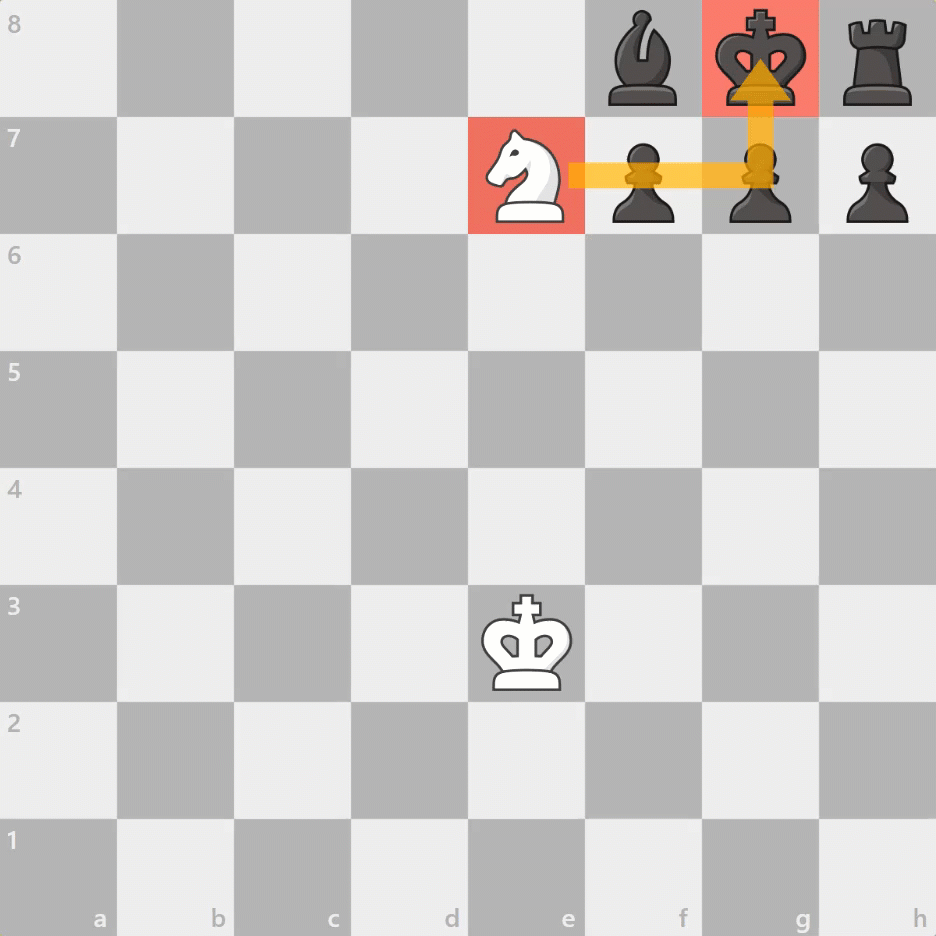
- Intermediate, Learning, Rules
- March 22, 2022
- 9:32 am
What are the chess rules for Check, Checkmate, and Stalemate
When the king is on a square attacked by a piece from the opponent, this is called “check”. Below are two examples of the white pieces checking black’s king.
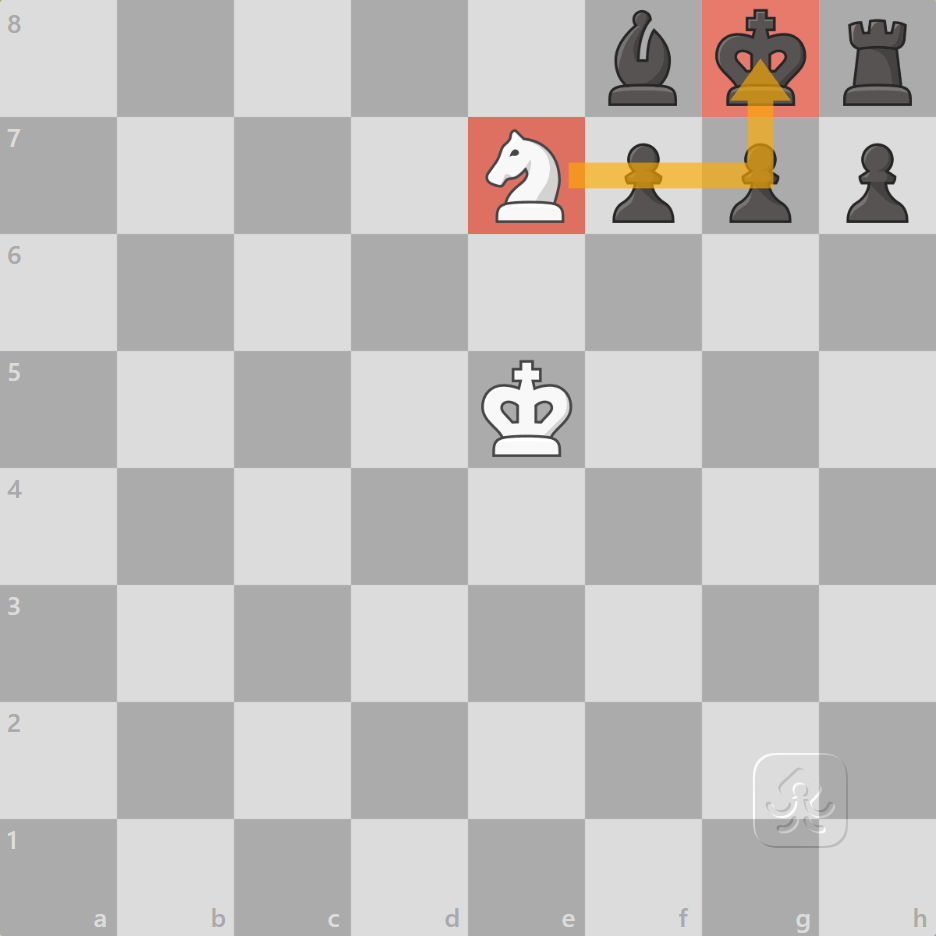
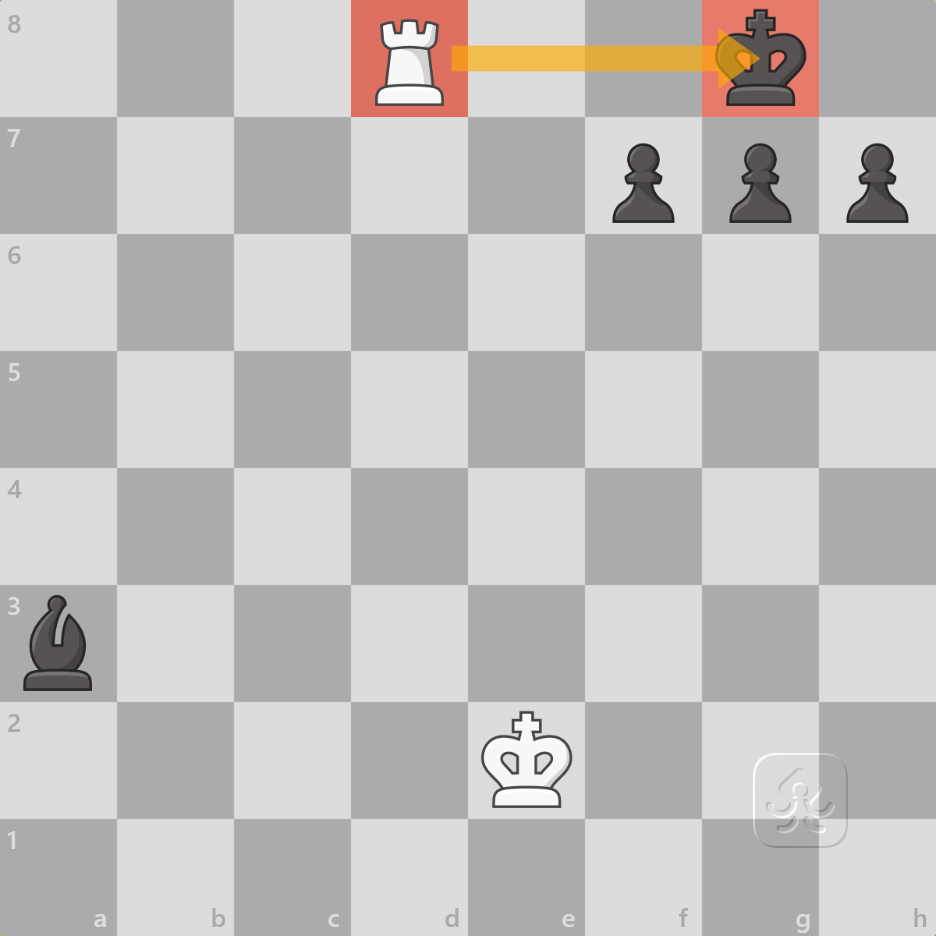
When in check, the king must get out of check before any other moves can occur. There are three ways to do this:
- Capturing the piece creating check
- Moving the king to a safe square
- Break the check by blocking with a different piece
Using the examples of check provided above, here is an example of each way of removing a check.
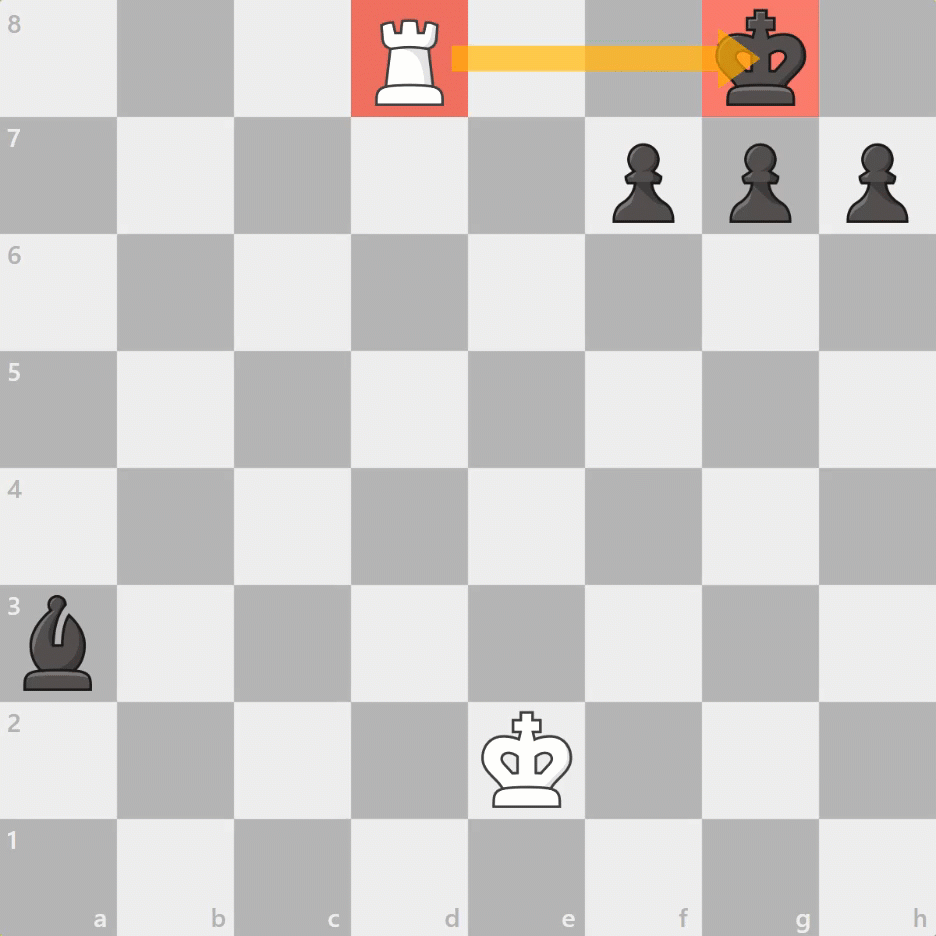

If a king is in check, but the check cannot be blocked, the piece causing check cannot be captured, and the king has no safe squares to move to, this is called checkmate, and the game is over. Below are 2 examples of a king in checkmate.
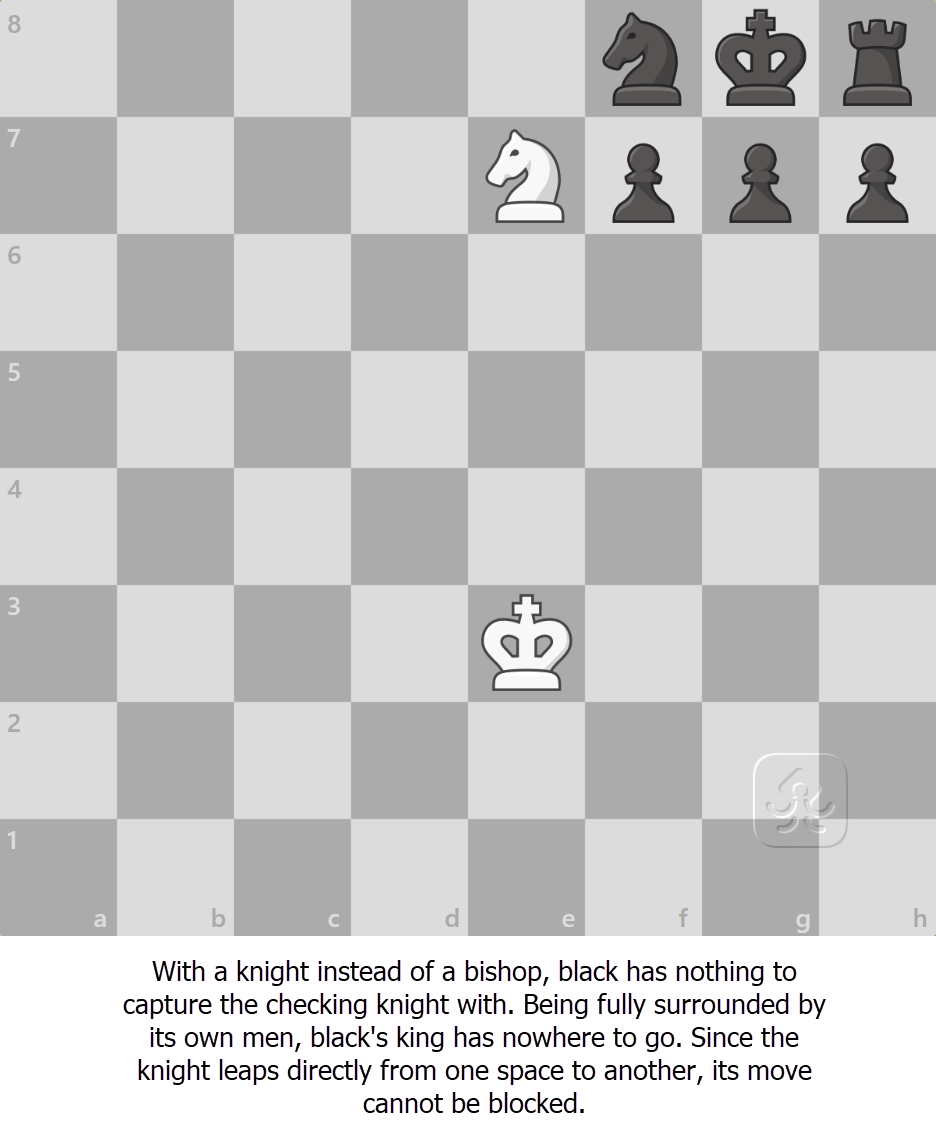
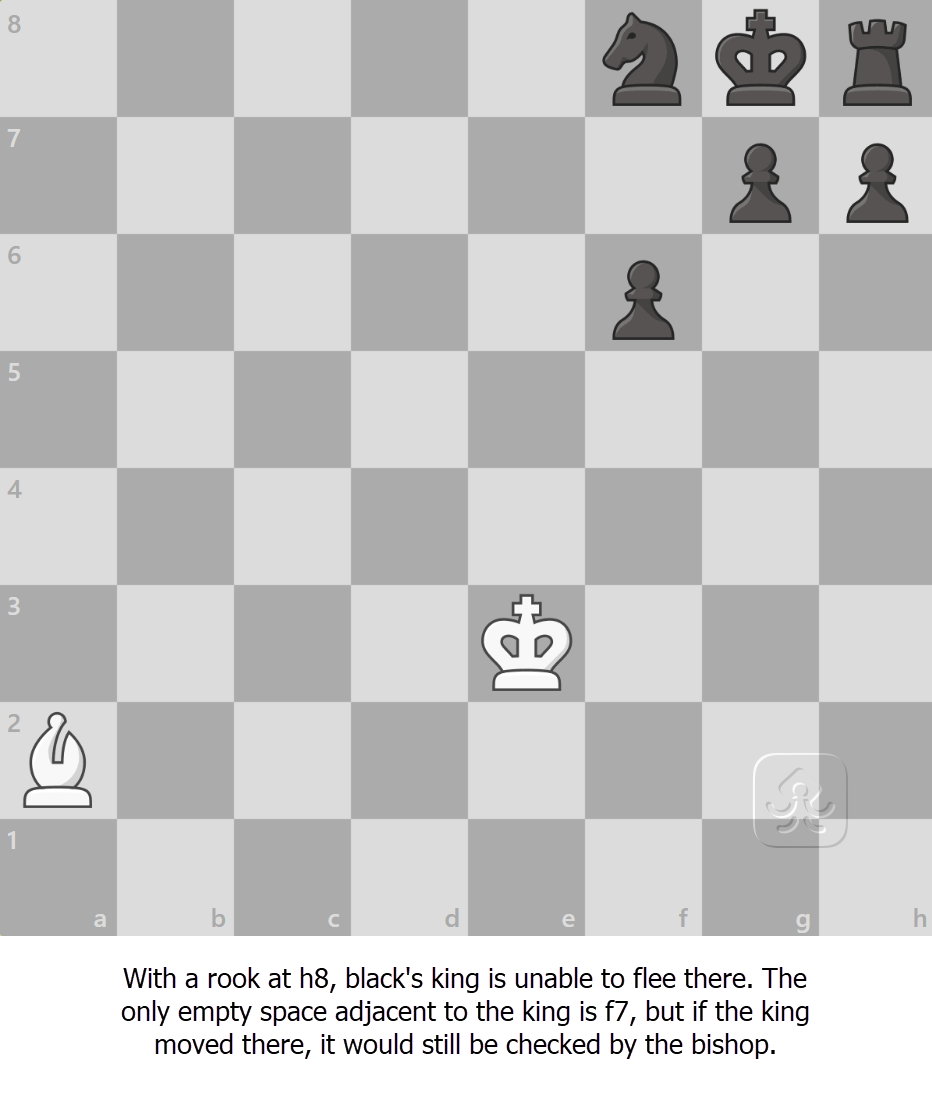
No, but also kind of yes. Kings have the ability to check each other in terms of their ability to attack 1 square in any direction, but because both kings cannot enter into a checked square, it is impossible for a king to put another king in check.:
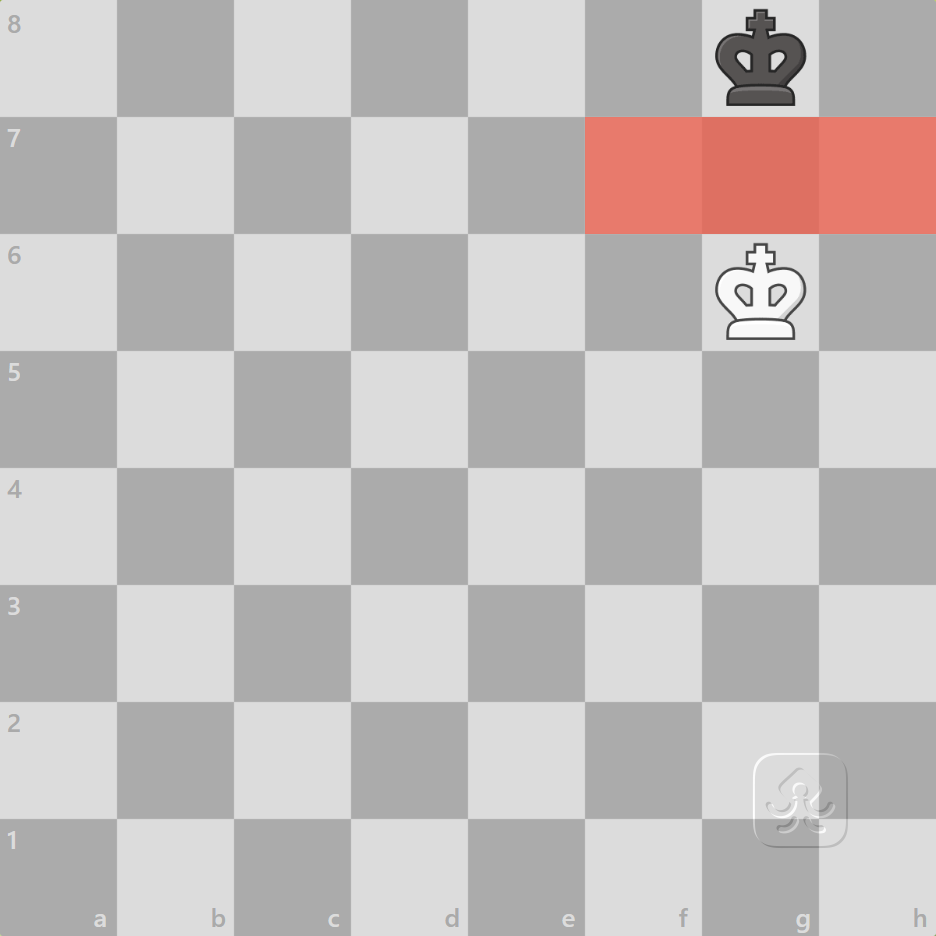
Neither king may move to f7, g7, or h7, because it would be in check by the opposite king. This would be an illegal move.
It is possible to move a king to create a check or mate on the opposing king. This is known as a discovered check or discovered checkmate. Take for instance the example below where the king and rook are on the same file. When the king moves out of the way of the rook, this reveals the rook to the enemy king creating check.
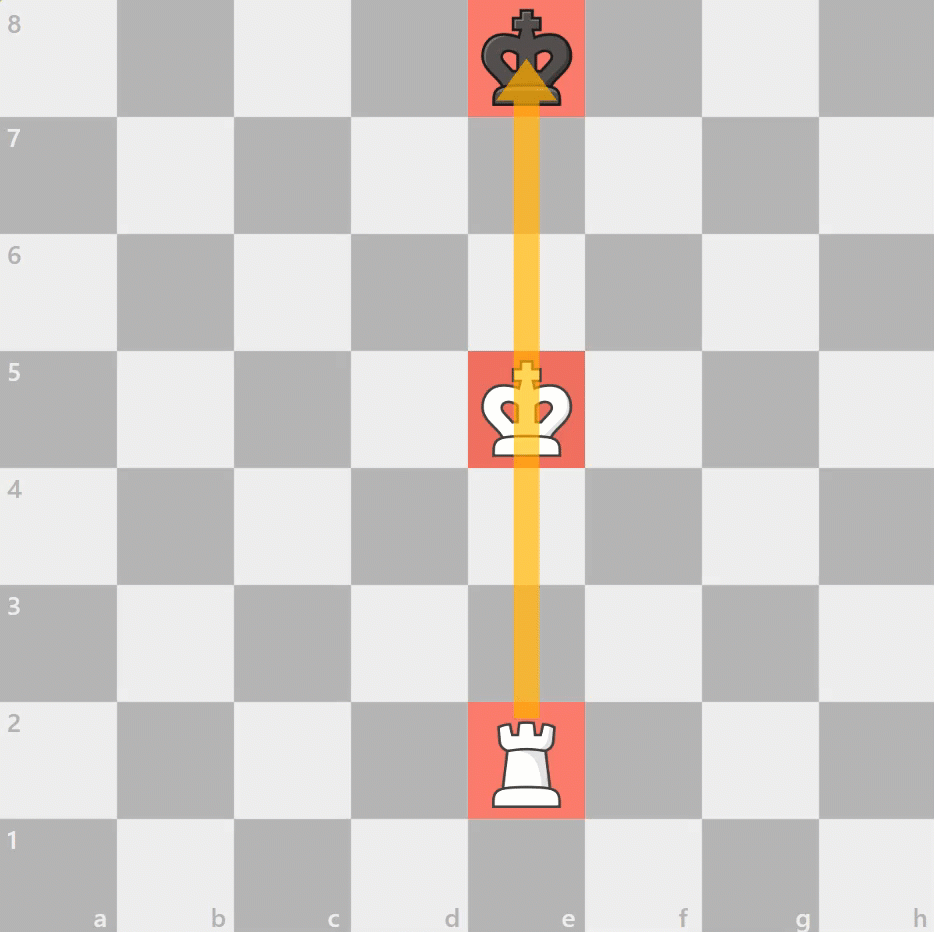
There are three ways to remove a king from check, and capturing the checking piece is a legal move, so long as the king will no longer be in check after the move.
In this position, the black king is cornered and in check from the enemy queen.
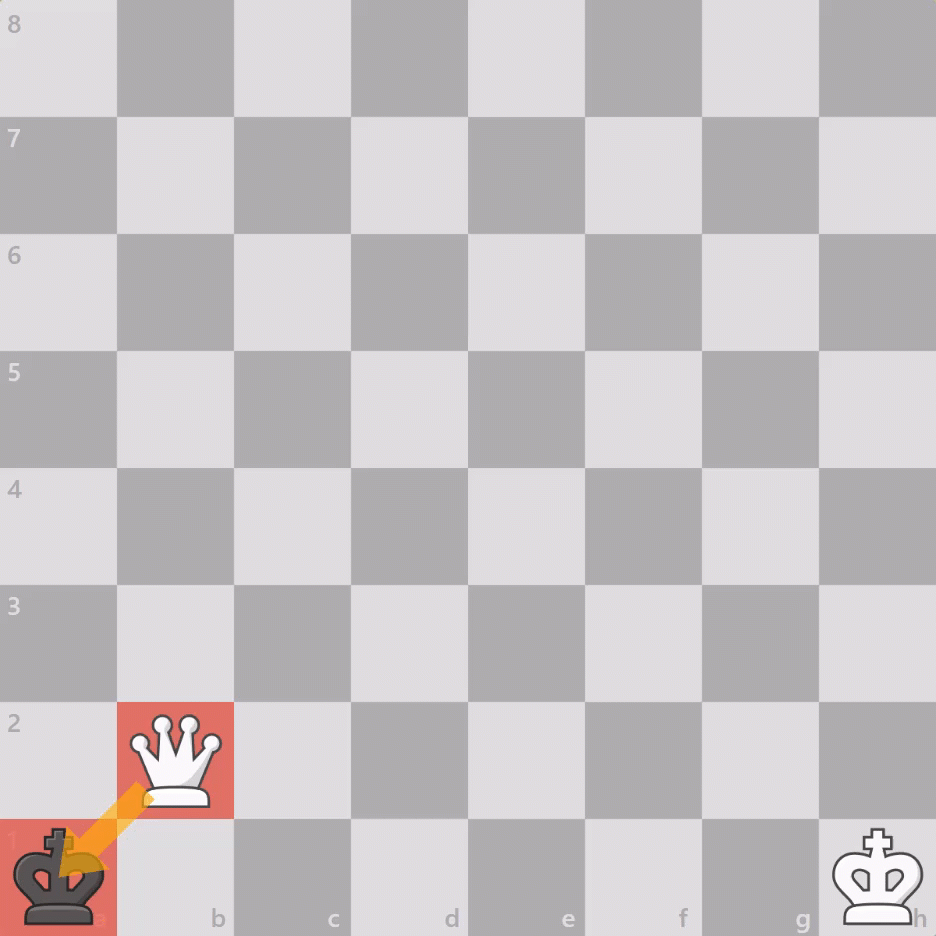
This check can be removed by capturing the queen with the king.
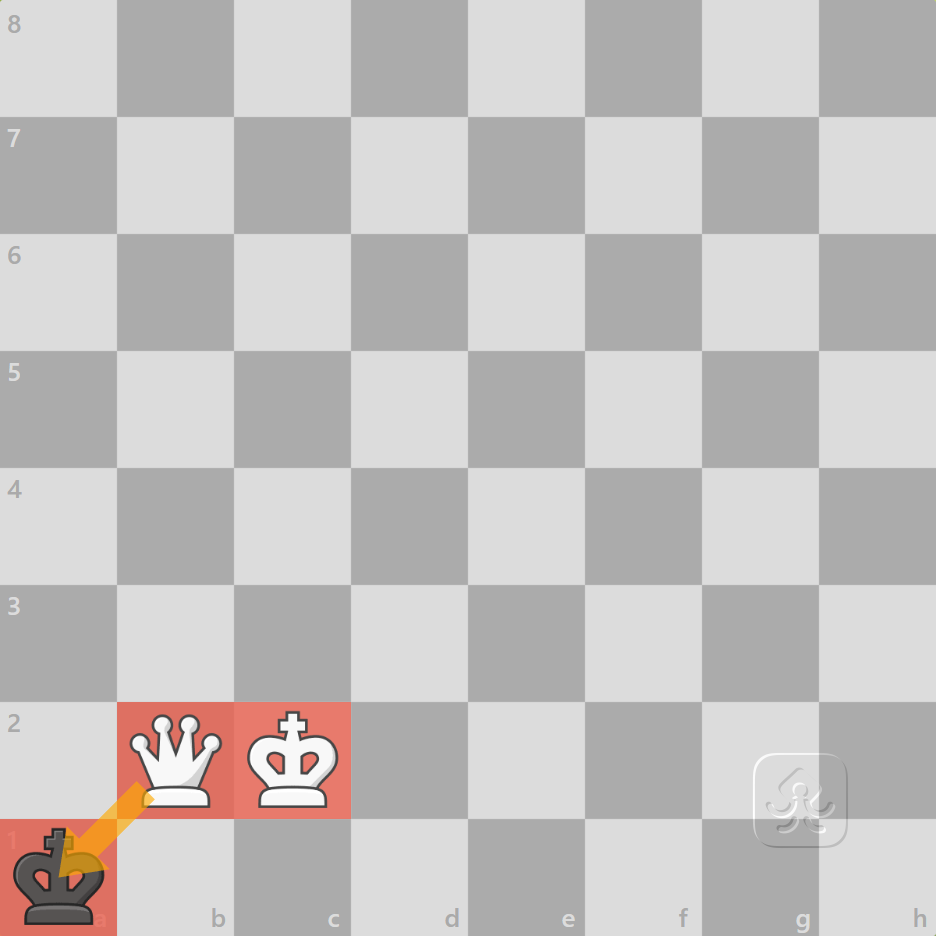
However, if the king is adjacent to the queen, it protects the queen creating a defender. Therefore, the black king cannot capture the queen and this is actually checkmate.
A double check occurs when two pieces create simultaneous checks on the enemy king. This usually occurs when one of the pieces moves, creating a discovered check and a standard check with the moving piece.
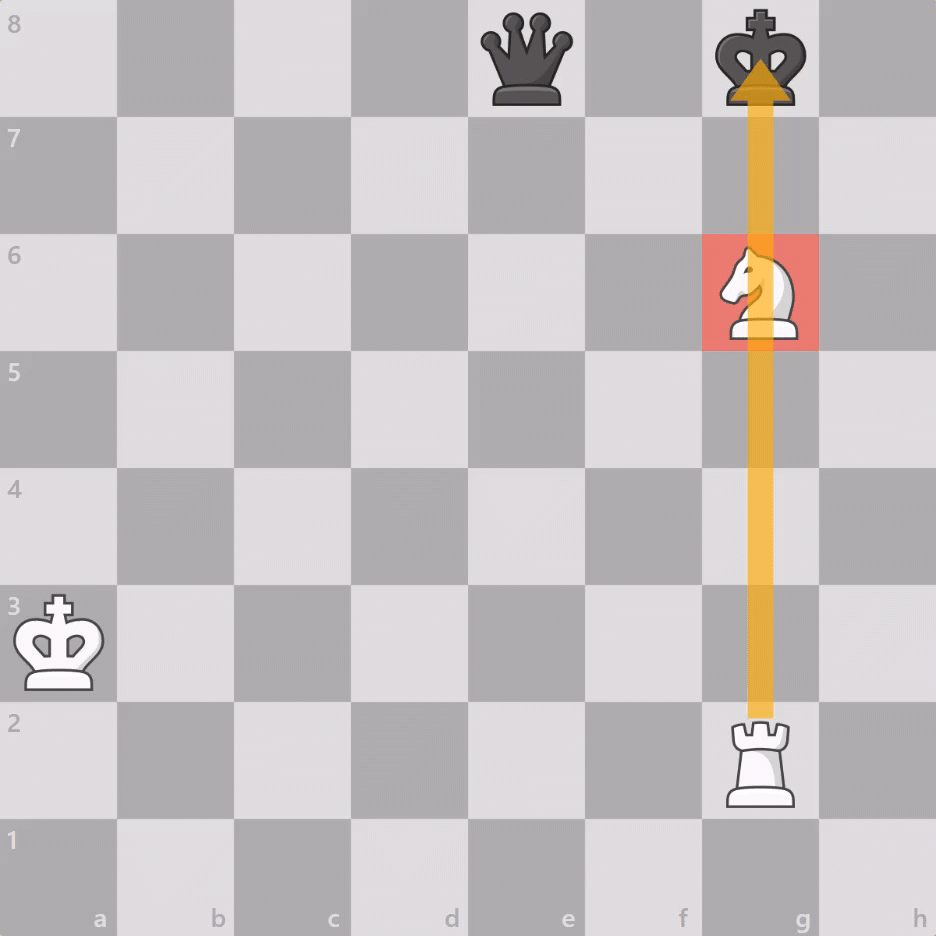
In this example, the knight is preventing the rook from creating check on the king on the g file. Once the knight moves to a square where it can create a check, this also opens up the g file, and exposes the enemy king to the white rook, creating a second check at the same time.
A stalemate in chess means that the enemy king has no ability to move to another safe square, there are no other legal moves, and the king is not in check. Here is an example:
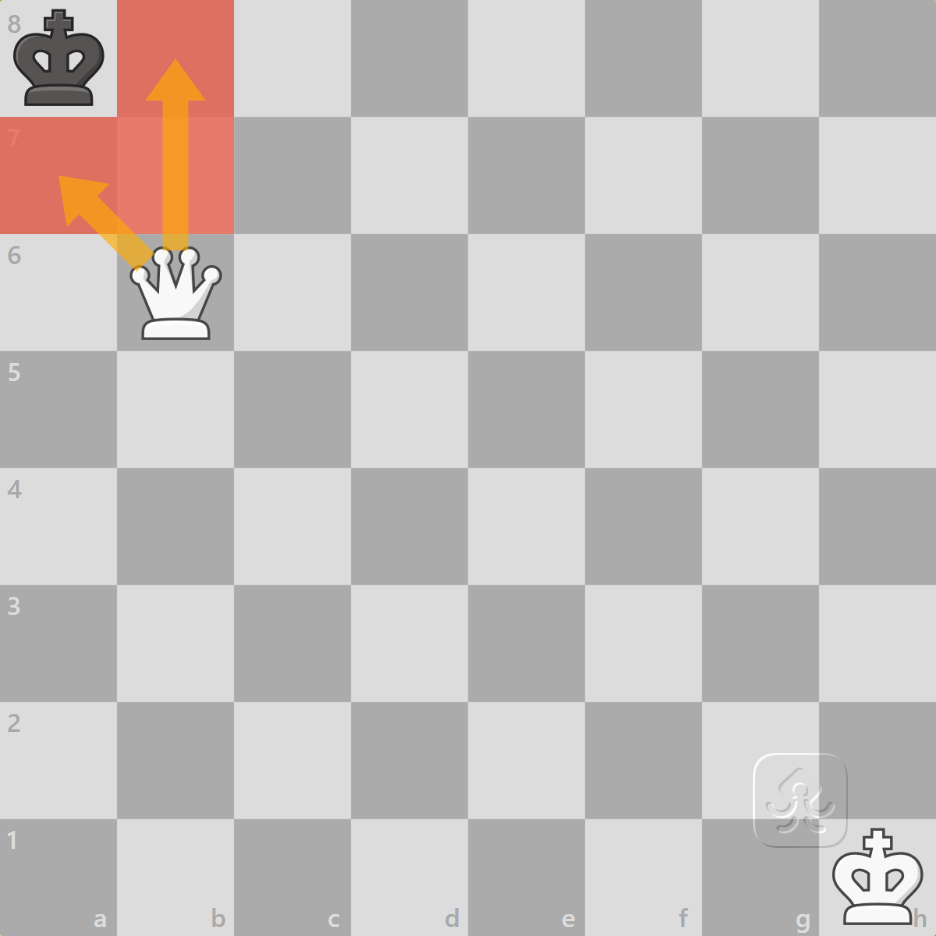
Black to move, but the black king has no legal move. In addition, the black side has no other pieces and therefore this is stalemate.
Read also
How to become a Chess Grandmaster
The Sicilian Defense: A Comprehensive Overview
5 Beginner Mistakes to Avoid in Chess
Best Chess Software for PC [Top 5]
Best Chess Software for Mac [Top 5]
